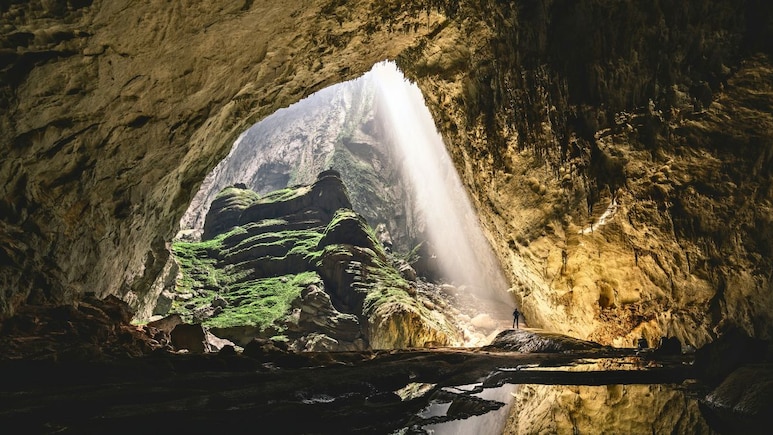
Caves have always fascinated humanity. They are not just hollow spaces in the earth but have been considered sacred dwellings, shelters, and the backdrop for stories of survival. Across the world, thousands of caves have been studied, but some stand apart for their sheer scale and mystery. Among them is Son Doong Cave in Vietnam, a natural wonder so immense that it feels like another world hidden away from the chaos above. If you are planning a trip to Vietnam and wish to experience something extraordinary, Son Doong is an adventure that captures both imagination and awe.
Also Read: 7 US Cities You'll Want To Keep Visiting For Amazing Food
How Was Son Doong Cave Discovered?
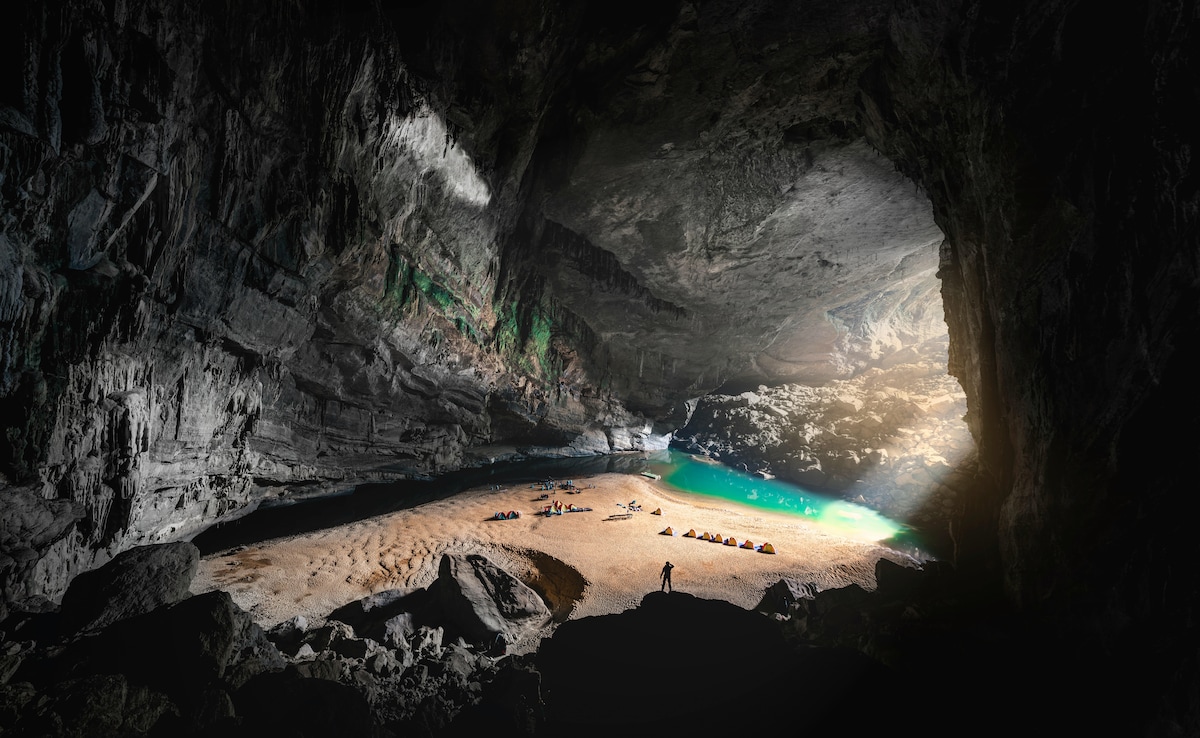
Photo: Unsplash
Son Doong was first found in 1990 by Ho Khanh, a local farmer who sought shelter from a storm. Inside, the roaring underground river and fierce winds drove him away, and the cave's location remained a secret for almost twenty years. In 2009, British explorers returned with Khanh and revealed its astonishing size.
Son Doong Cave stretches over 9 kilometres in length, rises 503 metres in height, and spans 175 metres in width. To put that in perspective, it can house several of the world's largest caves and even fit multiple 40-storey skyscrapers. Once revealed, it gained international recognition not only for being the largest cave but also as one of the rarest natural formations on Earth.
Son Doong Cave's Unique Weather System
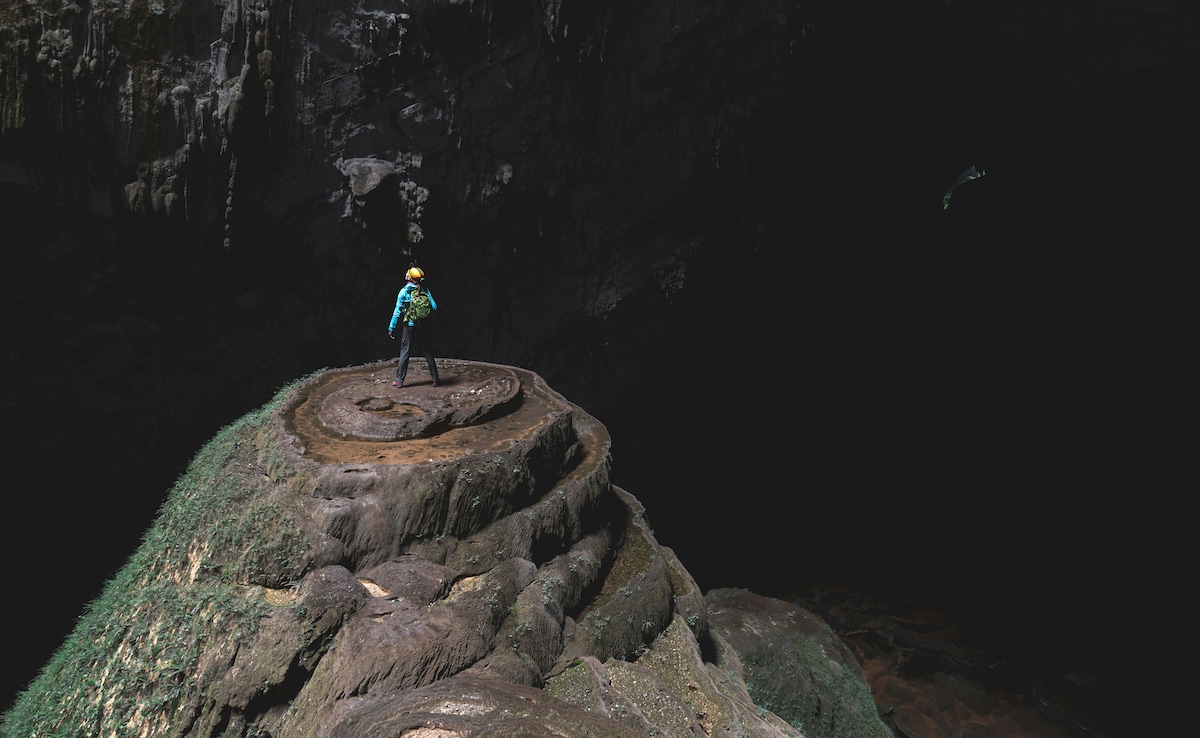
Photo: Unsplash
Son Doong is not just about size; it also has its own microclimate. Clouds, fog, and even rain form inside the chambers, giving the cave an otherworldly weather system. Scientists and adventurers continue to study this rare phenomenon, making Son Doong one of the few caves on Earth with such natural conditions.
Here is what you can expect across seasons:
Summer (June to August): Clouds appear inside the cave. Steam and vapour form from the underground river, combined with heat from the doline (a natural limestone depression). Clear weather often exists underground even during rain above. Waterfalls also appear at campsites and cave openings. Despite the season, the cave remains cool.
Winter: Chilly winds sweep through the cave, adding to its atmosphere.
Spring to Early Summer (January to April): Clear views emerge inside, with sunlight piercing through the collapses in the roof to create striking beams. While slightly cold, the illumination highlights the cave's grandeur.
Rainy Season: The cave is closed during heavy rainfall to protect both visitors and the ecosystem, as flooding risks are high.
What Makes Son Doong Cave Special
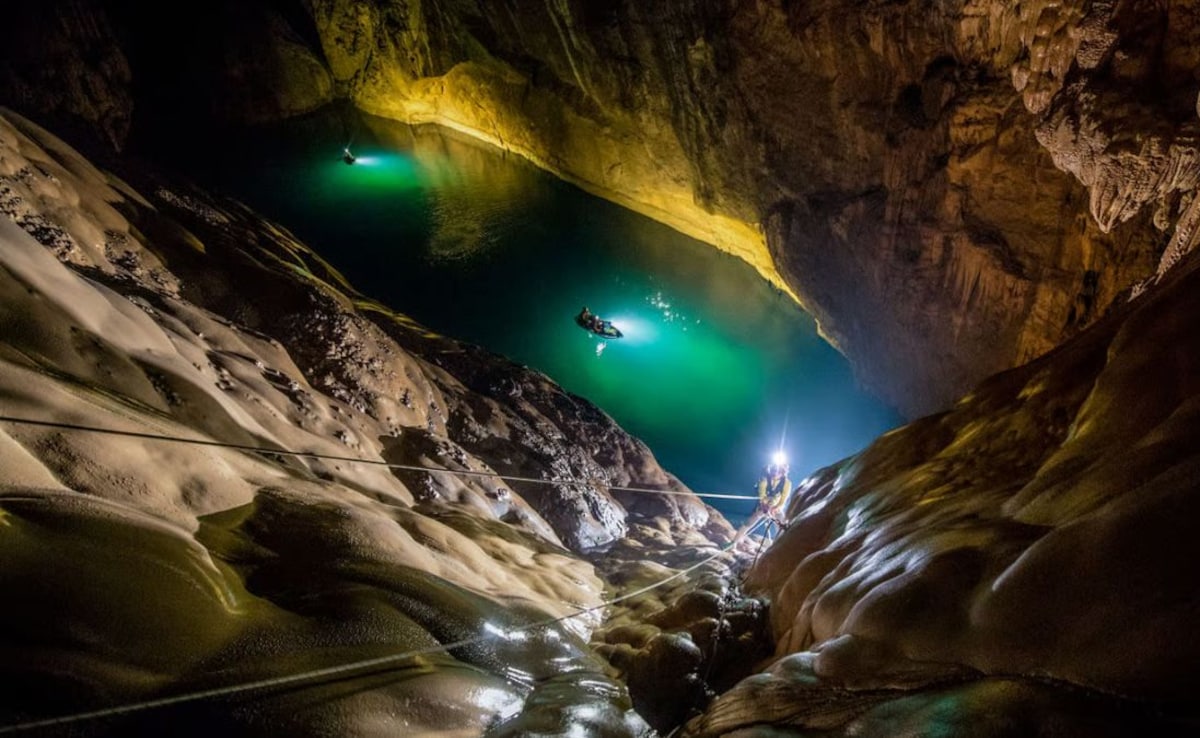
Photo: Oxalis Adventure
Knowing that Son Doong is the world's largest cave with its own weather system is remarkable in itself. Yet, there is even more that makes it unique:
An Underground Jungle
Centuries ago, when the cave's roof partially collapsed, sunlight streamed inside and gave life to a rainforest. This underground jungle now flourishes 200 metres beneath the limestone mountains. Massive trees and dense vegetation form a hidden ecosystem often described as a Garden of Eden below the surface.Larger Than Life Dimensions
Its chambers are so vast that some can house entire city blocks. Others rise tall enough to fit skyscrapers. Explorers often compare it to standing inside a natural cathedral, where the overwhelming sense of scale leaves visitors stunned.Rare Geological Formations
The cave is home to stalagmites rising as high as 70 metres, among the tallest in the world. These stone towers, formed over millions of years, make it feel like walking among nature's own skyscrapers.A Fragile Ecosystem
Son Doong shelters rare species of plants and animals, many still under study. Its isolated climate has created unique evolutionary conditions, making it a living natural laboratory that must be carefully preserved.
What It Feels Like Inside Son Doong Cave
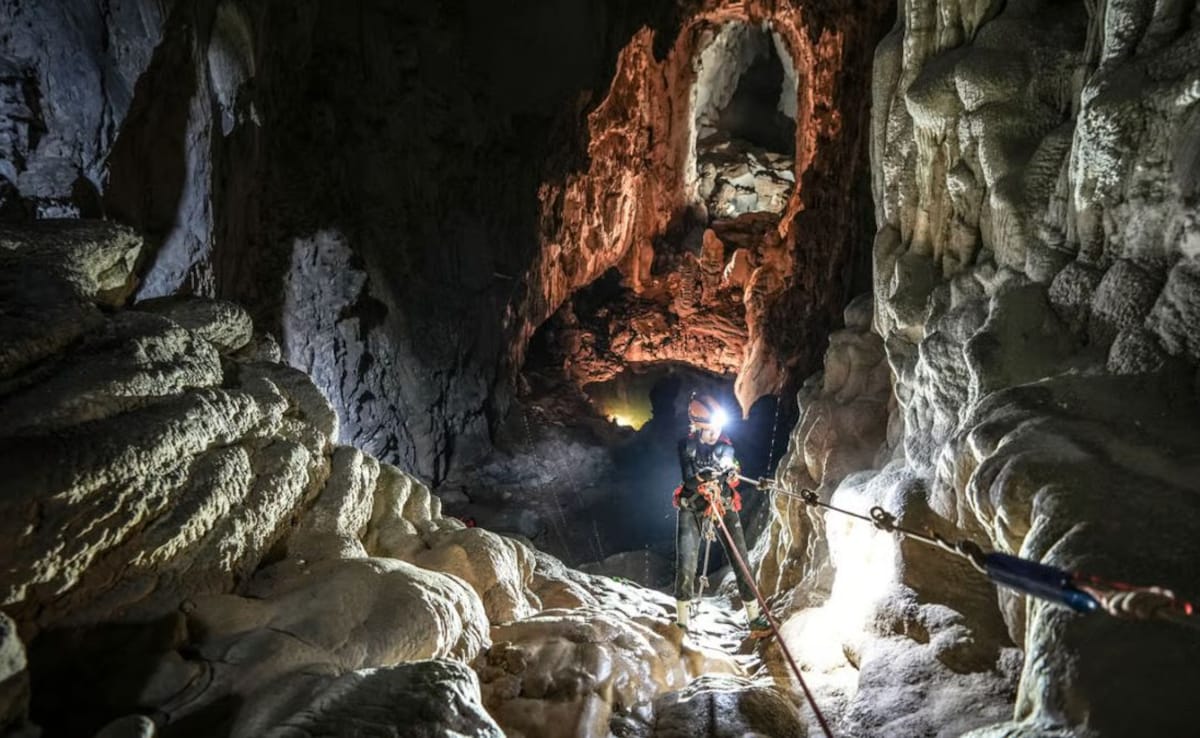
Photo: Oxalis Adventure
Stepping into Son Doong feels surreal. Mist escapes through the vast openings, and rays of light illuminate lush underground jungles. Rivers echo through the silence, while shifts in air temperature bring sudden changes in atmosphere. For adventurers, it feels like stepping onto another planet, with an experience that blends wonder with an appreciation of nature's scale.
Best Time To Visit Son Doong Cave
The cave is generally open to visitors from January to August. Spring and early summer (January to April) are popular for clear conditions and spectacular sunbeams inside the cave. Summer months remain cool underground despite the heat outside. The rainy season from September to December is unsafe due to flooding risks, and tours remain closed.
How To Visit Son Doong Cave
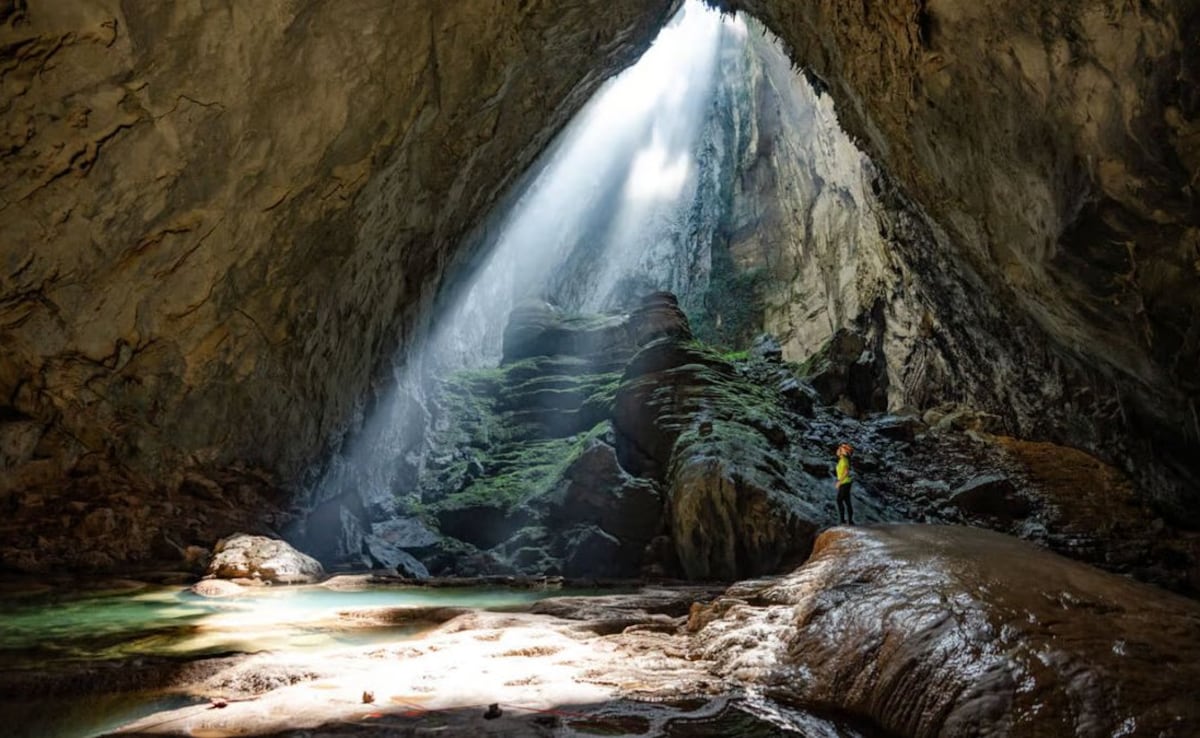
Photo: Oxalis Adventure
Reaching Son Doong is not straightforward, which adds to its exclusivity. The cave lies deep inside Vietnam's Phong Nha-Ke Bang National Park in Quang Binh Province. Only one company, Oxalis Adventure, has the licence to conduct tours, and annual slots are very limited.
Here is how to reach it:
1. Reaching Dong Hoi
Flights: Vietnam Airlines and Vietjet offer daily flights from Hanoi and Ho Chi Minh City to Dong Hoi Airport.
Trains: Both northbound and southbound trains connect Hanoi and Ho Chi Minh City to Dong Hoi station.
Buses: Sleeper buses operate from Hanoi, Da Nang, and Hue directly to Dong Hoi or Phong Nha.
2. From Dong Hoi to Phong Nha
It is a 40-minute drive from Dong Hoi to Phong Nha village, where the Oxalis office is located.
3. Visa Requirements
Check visa requirements before travelling. Citizens of ASEAN nations receive a 30-day exemption, while visitors from countries including the UK, France, and Germany are eligible for 45-day visa-free stays.
4. International Airports
The main entry points into Vietnam are Tan Son Nhat International Airport (Ho Chi Minh City), Noi Bai International Airport (Hanoi), and Da Nang International Airport. From there, domestic flights or trains connect to Dong Hoi.
Safety Guidelines For Son Doong Visitors
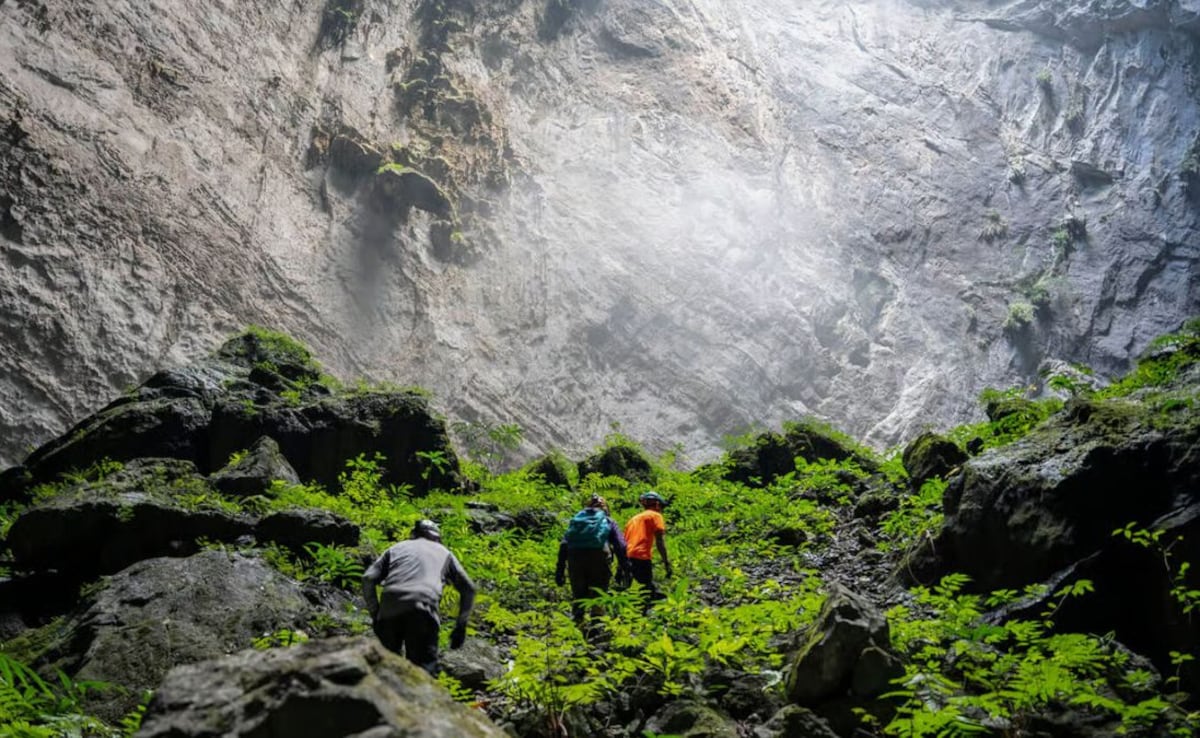
Photo: Oxalis Adventure
Given its scale and location, visiting Son Doong requires strict safety measures:
Only travel with licensed guides from Oxalis Adventure.
Follow the instructions of safety teams at all times.
Maintain good physical fitness to manage jungle treks and river crossings.
Be cautious near underground rivers and waterfalls.
Respect conservation rules to protect fragile formations and wildlife.
Cost Of Visiting Son Doong Cave
The expedition spans several days, with trekking, camping, and river crossings. Permits are priced at about USD 3,000 per person, reflecting both the limited access and the balance between tourism and conservation.
Accommodation Options Near Son Doong Cave
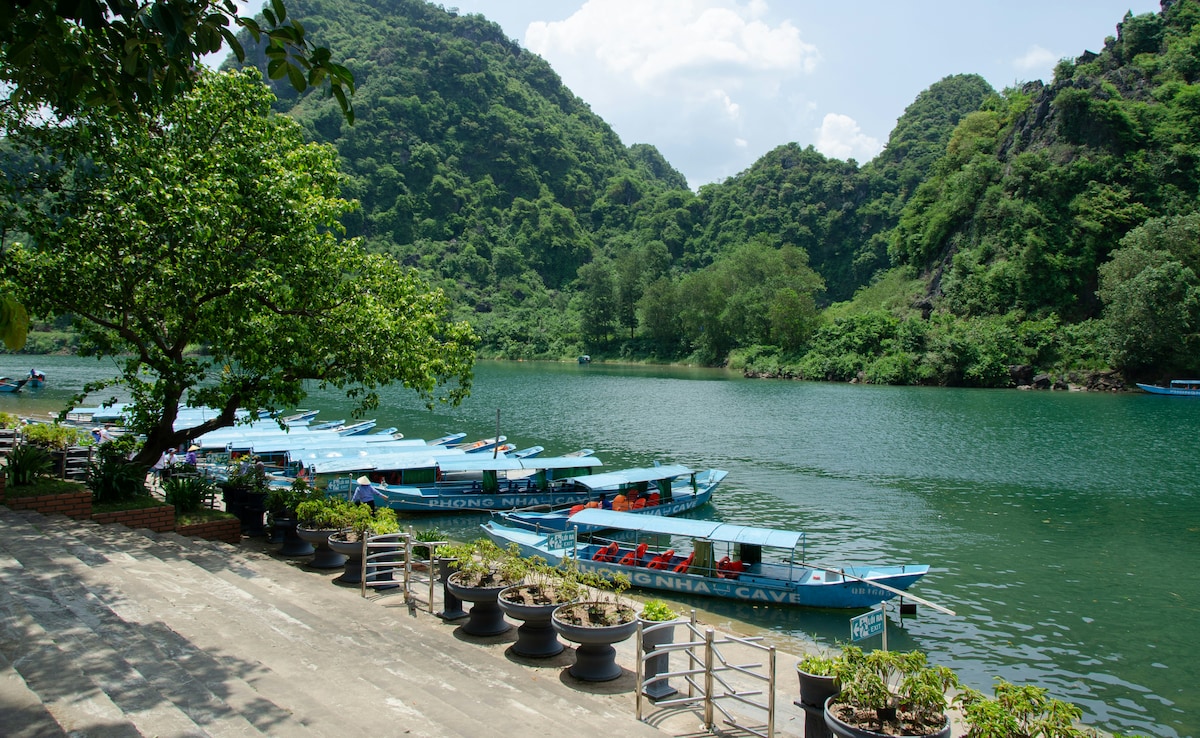
Photo Credit: Unsplash
Most travellers stay in Phong Nha village or Dong Hoi city before or after the cave expedition. Options range from homestays and guesthouses to mid-range hotels. In Dong Hoi, visitors can also find luxury resorts overlooking the coast, making it a comfortable base to unwind after the trek.
Also Read: 8 Countries With Multiple Capitals That Every Traveller Should Visit
What Else To See In Phong Nha National Park
Son Doong is the star attraction, but Quang Binh Province is home to other fascinating caves worth visiting:
Phong Nha Cave: Famous for boat rides through limestone formations.
Paradise Cave: Extends 31 kilometres with shimmering limestone structures.
Dark Cave: Known for ziplining, mud baths, and kayaking.
Together, these caves make Phong Nha a leading destination for adventurers in Vietnam.
Son Doong Cave Photography Tips
Capturing Son Doong on camera is challenging but rewarding. Here are some photography tips:
Use a wide-angle lens to showcase the scale.
Keep gear waterproof to protect against rivers and mist.
Shoot during early daylight for sunbeam effects.
Rely on natural light to highlight the formations.
Include human figures for scale in photographs.
Travel Hacks For Son Doong Cave Visitors
Before planning a visit, consider these important points:
Maintain strong physical fitness as the trek is demanding.
Pack light, quick-drying clothes and sturdy trekking shoes.
Carry minimal equipment since everything must be transported by hand.
Secure bookings months in advance, as demand is high.
Respect conservation efforts and avoid damaging formations.
Track Latest News Live on NDTV.com and get news updates from India and around the world

